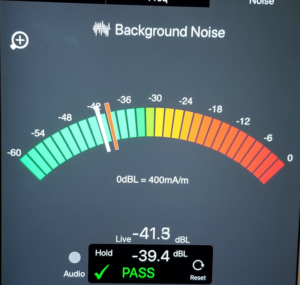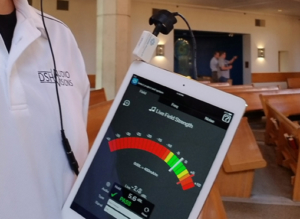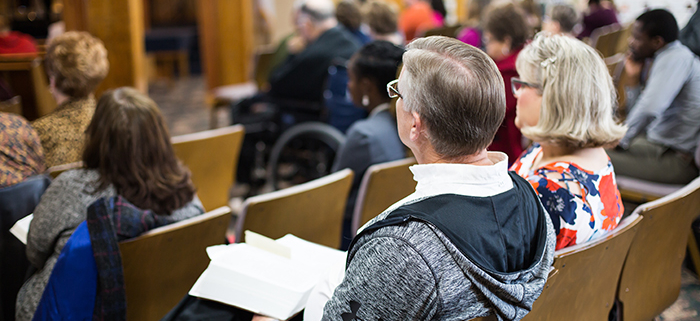Humane Technology for Lutheran Worship
There are plenty of reasons to be interested in the upcoming release of Christian Worship: Service Builder.
I could tell you how much time you’ll save. Producing a worship folder from a service plan takes mere minutes. I know you’ll want to use the extra time on visiting more prospects, memorizing your sermon better, preparing a better Bible class, or even getting home to your family earlier each day.
I could explain how Christian Worship: Service Builder will put the entire Christian Worship: Hymnal and Christian Worship: Psalter at your fingertips in a powerful and intuitive planning interface. I know you’re probably ready for a better way to work with a database of your thousands of digital worship files.
I know you’re probably weary of making slideshow decks every Sunday. You’ll be glad to hear that Christian Worship: Service Builder does that job for you as well. Of course, you also know you aren’t required to use that feature.1
I think you’ll also like the fact that Christian Worship: Service Builder supports custom libraries. All those files of yours scattered to the four winds of Dropbox and Drive will be organized into the unified planning and production engine at the heart of your congregation’s worship ministry.
At the launch of Christian Worship: Service Builder later this year you’ll be able to watch training videos that detail the delightful power the software delivers. You’ll even be able to set up a free trial to test drive Christian Worship: Service Builder yourself.2 And, really, that’s your best bet. You need to know what it’s like to use it. And once you’ve gotten a sense of what the software is and does, you’ll be happy to subscribe to the service. I won’t spend 2,000 words trying to convince you of something you just need to see for yourself.
I won’t spend 2,000 words trying to convince you of something you just need to see for yourself.
I will, however, spend 2,000 words on something that doesn’t fit nicely in the typical marketing materials for this kind of product. I want to explain how Christian Worship: Service Builder is a tool that stands in stark contrast to the way we typically encounter technology today. This is a tool that can be put to use building up the people of God instead of hollowing them out.
Technologies are not neutral
Technology seems to be a natural expression of our humanity. Already in Genesis 4 we meet Tubal-Cain, “who forged all kinds of tools out of bronze and iron.” From tilling fields to constructing homes, such implements were put to use cultivating civilization.
Humans also use tools to kill. In the same chapter of Genesis we meet Lamech who boasted, “I have killed a man for wounding me.” While we don’t get the details, it seems safe to guess that Lamech had something either sharp or blunt to take care of the man who injured him.
This is a tool that can be put to use building up the people of God instead of hollowing them out.
But we don’t need a biblical narrative to confirm a truth that most people intuitively sense to be true: technologies are not neutral. They carry with them a kind of intent, but not something that arises from the nature of the tool itself. No, the intent arises from the human mind that designed the tool for a particular purpose. A plow tills not because the plow wants to till but because a person designed it to till. A blade kills not because the blade wants to kill but because a person designed it to kill. Tools are made for a purpose and work best when they are used according to their intended telos. Anyone who has tried to clean their ears with a screwdriver knows this.
Tools are powerful because they extend the relatively feeble capacity of what the human body can do. There’s a curious fact about mankind evident already in the beginning: the human mind can conceive far more than the human body can do. In this light, we can judge that the best technologies are the kind that not only aid us in our tasks but also invite us to participate more deeply in the kind of skillful effort that is both rewarding to the laborer and a benefit to others. This is humane technology in the formal sense of the word.
Discipleship in the attention economy
You can sense, as I do, that not all of our technologies are humane. In fact, the most lucrative and influential technologies of our day tend to be quite the opposite. The chief culprit right now is, of course, our social media. These technologies have been invented and engineered for a very particular purpose: to convert our time and attention into a commodity to richly benefit a few huge companies in California. We are beginning to see the harmful effects of such an all-out engineering effort. In fact, the whole topic has recently begun to stir the political pot in the United States. We’ve delegated that particular responsibility to our elected representatives, but we pastors do need to work out the implications of this so-called attention economy on the flock of Jesus Christ.
It seems to me that faithful discipleship requires believers to pay faithful attention to what matters most, usually in the form of, among other things, reading the Scripture, intercessory prayer, and then serving those for whom we pray. But reading, prayer, and service are not revenue-generating activities for the makers of our ubiquitous manipulative technologies. For all their claims to the contrary, companies like Facebook are not creating anything remotely close to what Christians have historically called “community.”
Furthermore, because the attention economy is so huge it feels like an inevitable fact instead of a contingent and deliberately-designed state of affairs. I also suspect that since so many of us have ourselves been converted into attention economy commodities we tend to discount the important counterexamples and counterarguments that point to the possibility of a different, more humane, approach to how technology fits in our lives and the lives of the people who belong to our congregations.
So you have the seemingly-invincible conclusion that in light of all this (here I gesture with my hands vaguely at, well, everything), what churches really need to do is get into the game and compete for attention. I suspect this is one reason why what was only an idea pre-Covid has gained serious traction ever since: that our churches now feel some degree of compulsion to transform themselves into media ministries.
Now, don’t misunderstand me. There is a vital place for modern media in the work of a local congregation. I’m not suggesting that you pull the plug on your website. What I am suggesting, however, is that if we think we’re going to compete with the likes of Facebook and Netflix at their own game, then we’re almost certainly mistaken.
The market for attention is a race to the bottom.
I’ve heard it said that Christians who see the church as a market are usually quite adept at sensing the winds of culture and setting the sails of ministry accordingly. This has produced some of the world’s best consumer churches, including some churches with charismatic leaders capable of getting a lot of attention in the form of likes and subscribes. But it also means that such Christians are largely unable to produce a consistent, counter-cultural witness when such a thing is needed. The market for attention is a race to the bottom. And the problem with a race to the bottom is that eventually you get there. The wiser course of action is to stay out of a race you can’t win and instead to train for one where you might have a real competitive advantage.
Technology to aid and invite the work of the church
So, what does this have to do with Christian Worship: Service Builder? Am I claiming that this hymnal software will somehow turn the tide and help churches cultivate faithful ways of living in our modern milieu? Sort of. And here’s why: Christian Worship: Service Builder is humane. Christian Worship: Service Builder is a technology that has been designed and engineered from first principles to be the kind of technology that aids and invites the kind of work that really matters, especially in the church.
Some of this is simply practical. I haven’t spent as much time as some of my colleagues trying out various worship planning and production systems, but I’ve kicked the tires on enough of them to reach some provisional conclusions. I’ve seen spreadsheets admirably refashioned from number-crunchers to worship planners. I’ve tested some of the more popular worship planning platforms out there. I’ve attempted to invent my own ways of automating the whole process. But nothing works quite the way I’d like it to. In the case of popular planning platforms, the cause is usually the design. Most programs assume the primary model of Christian worship is preparing a setlist of popular but often ephemeral Christian songs for a band to perform before the pastor comes on stage to talk for 45 minutes. The idea that there are texts to be read aloud or spoken by the congregation is foreign to the typical worship software available today. Entire aspects of Lutheran worship don’t fit because they were never part of the design conversation. And in the case of spreadsheets and databases, you can certainly do a lot with them to plan worship, but the production side of things still requires significant effort in other applications like Word or Pages. (Some are even still using Publisher, or so I hear.)
Christian Worship: Service Builder dramatically simplifies the worship planning and production process by providing automation where it’s needed most: in the busy work that isn’t the real work. Does anyone really think the real work of worship is cropping TIFFs? Do we really need to spend time copying and pasting texts? You may like the system you’ve cobbled together, but is your job title really Systems Administrator? (The answer to each of these questions is no.) By delivering significant productivity gains to aid the production side of things, Christian Worship: Service Builder is able to invite the pastor planning worship to put his skills to use in a way that is more rewarding for both him and the people he is called to serve.
Does anyone really think the real work of worship is cropping TIFFs?
Consider someone with gifts in planning excellent services. Christian Worship: Service Builder will free him to work more creatively with the rich resources available in Christian Worship (and his congregation’s custom library of materials). Now consider someone whose gifts lie in other areas. Christian Worship: Service Builder will allow him to rely, by default, on the wisdom and skill embedded in the content of the hymnal and the recommendation engine within Christian Worship: Service Builder. And because Christian Worship: Service Builder has powerful sharing tools, pastors and other worship planners will be able to share worship plans with one another easily. I envision healthy cooperatives in which a pastor with a well-deserved reputation as a good worship planner shares his gifts with others via Christian Worship: Service Builder. This is the good kind of sharing; not a lazy commons of miscellaneous materials but the genuine fruit of professional craftsmanship. This kind of sharing can free colleagues to do what they are better suited to do, like preaching, teaching, counseling, evangelism, and the like. A technology that aids with busy work and invites skilled effort will be a benefit for many.
Now, before I conclude, please allow me to point out the philosophical forest that consists of these practical trees. At the heart of this whole endeavor is the conviction that what’s needed for the people of God to flourish is not just automation and efficiency but invitation and embodiment. Indeed, one result of Christian worship is the cultivation of something in God’s people that cannot be outsourced, digitized, automated, or commoditized.
Consider this. Why do we call the mountains “lofty”? Why do they inspire us? In comparison to the total scope of the universe, mountains are anything but lofty. But we call them “lofty” because our perception of them is shaped by our own embodied stature. Because we are five-foot-something or thereabouts we experience mountains as the kind of places where we can enter into their beauty—but only with significant, yet rewarding, effort. For a disembodied consciousness the idea of “lofty” is emptied of its meaning and becomes nothing but a pure formality with all the excitement of an entry in the Oxford English Dictionary. Apart from embodiment we have no real capacity to know what it’s like to call mountains “lofty” in this way.
Much the same applies to an array of Christian concepts. Take the command to show love and mercy to the weak and vulnerable, for example. A person who grows accustomed to disembodiment will have, over time (and maybe even quite quickly), a diminished capacity to show such mercy. Why? Because that person’s capacity to understand what mercy even is will be diminished. Looking into the eyes of a vulnerable person is a valuable Christian practice because doing so is to see yourself as you might be, indeed, as you will be. To gather together over the long years of Christian life is to see one another suffer from calamity, to succumb to illness, to grow weak with age—or maybe just to have really bad breath.
One of the central myths of our society is to pretend that such things don’t happen. We devote untold resources to shielding ourselves from the reality of suffering and weakness. And all this investment in avoidance yields a society that might prefer the death of the weak and suffering rather than to care for them. We must see these things in the flesh if we want to grow in our capacity to show mercy. We need to understand what “weak” means by knowing what it’s like to see weakness, to be weak. Weakness is a sight, a sense, a smell, not just a data point or definition.
Of course, worship is about more than seeing each other grow old; this is just one aspect of a multi-faceted subject. But, please, reflect on this deeply if you want to understand a bit more why the Holy Spirit instructs his church to not give up meeting together. This isn’t about moving your worship statistics from in-person to online. This is about inviting God’s people to grow in their ability to be, well, humane—as God has called them to be.
Core Lutheran intuitions are engineered into the interface.
There are plenty of reasons to be excited about the upcoming release of Christian Worship: Service Builder, not the least of which is that this is software designed for the particular purposes of Christian worship. This is a tool that matters not because it’s clever or trendy or economical. This is a tool that matters because it supports the redemptive invitation of Christian worship and the Lutheran tradition. Deep Christian convictions are baked into the assumptions of the program. Core Lutheran intuitions are engineered into the interface. It’s built to aid and invite the pastor in his work so he can invite the people of God to learn more and more what it’s like to be the people of God. This is no small thing.
Put technology to use, especially the humane kind, the kind that helps to make congregations into outposts of Christ’s kingdom on earth, the places where there is more than good content to consume online, the places where there are warm fires and comfortable chairs and generous meals and merciful people who know and serve one another even as they know and serve their Lord Jesus Christ.
By Caleb Bassett
Pastor Bassett serves at Redeemer, Fallbrook, CA. He is a member of the WELS Hymnal Project Executive Committee and chairman of the project’s Technology Committee.
1 See “Projection in Worship” at welscongregationalservices.net/hymnal-intro-presentations for resources to evaluate pros and cons of projecting liturgy and hymns. The editor’s congregation is currently building a new church. Design criteria for projection include: 1) positioning does not detract from focus on the primary symbols of the means of grace in the chancel, and 2) design/location must not suggest that projection should regularly be used for liturgy and hymns. (Large monitors that dominate the chancel beg not to be empty). Inquiries are welcome. B Gerlach.
2 Last summer a very modest early release of Service Builder was made available to assist those who do long-range worship planning. This release provided the new lectionary—readings, psalm, Prayer of the Day, Gospel Acclamation, and Hymn of the Day. This enables even those who are not yet purchasing the new hymnal to use the new lectionary.
Service Builder and Books
With Service Builder’s remarkable power to include everything in the worship folder, why use printed hymnals at all? And why sing hymns from the book rather than a worship folder? An article on this topic is available at the link in the first endnote. Here’s a short summary.
- The new hymnal is expertly designed and the content is carefully curated. These attributes communicate to worshipers and visitors alike a sense of rootedness in the church.
- Hymnals are durable and last many years in a variety of worship settings.
- Hymnals allow singing in harmony. Copyright restrictions prohibit the printing or projection of harmony parts in hymns.
- Hymnals are a one-time investment that also reduce the annual cost of Service Builder.
WORSHIP
Learn about how WELS is assisting congregations by encouraging worship that glorifies God and proclaims Christ’s love.
GIVE A GIFT
WELS Commission on Worship provides resources for individuals and families nationwide. Consider supporting these ministries with your prayers and gifts.
[fbcomments num=”5″]


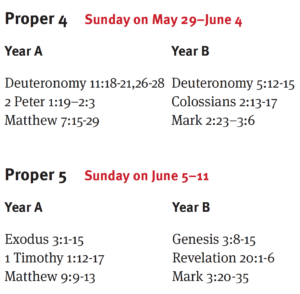 adings for the Sundays after Pentecost. The benefits of using this system include ties to wider Christianity, and the ease of determining the propers for the Sundays after Pentecost simply by their calendar date.
adings for the Sundays after Pentecost. The benefits of using this system include ties to wider Christianity, and the ease of determining the propers for the Sundays after Pentecost simply by their calendar date.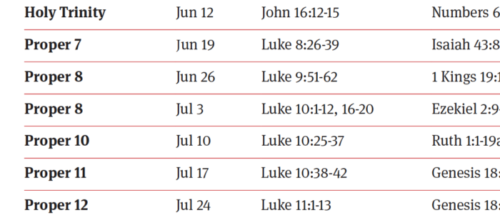

 further still to go in the “uphill climb of understanding” before we could arrive at the “smooth downhill of revealing.”
further still to go in the “uphill climb of understanding” before we could arrive at the “smooth downhill of revealing.”


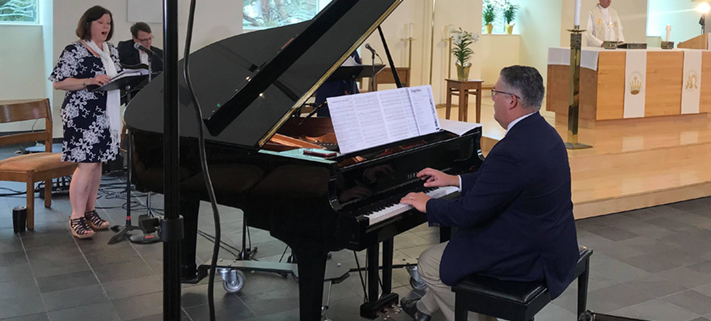










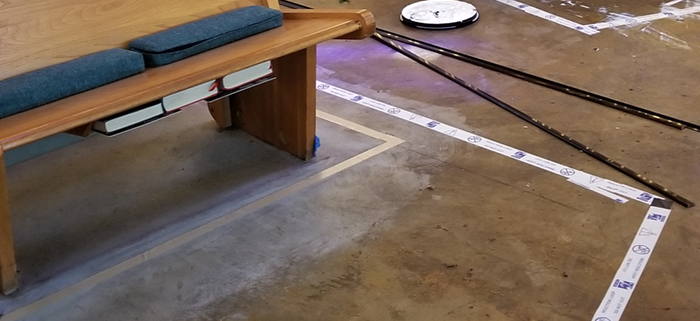
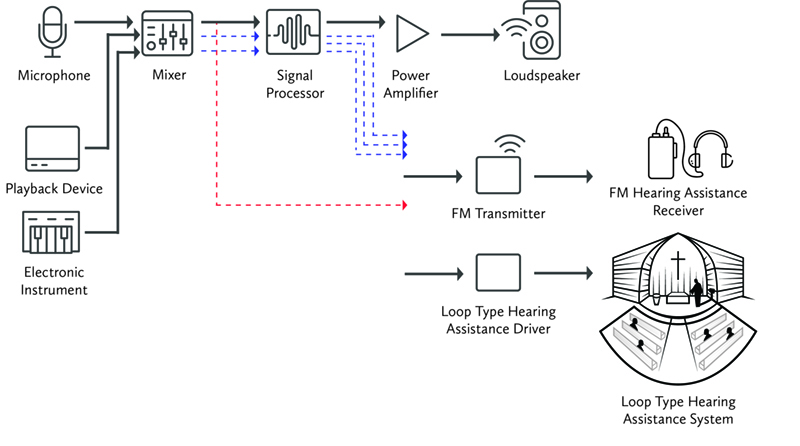
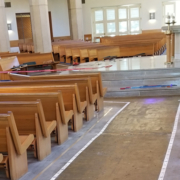 Let’s move to the inductive loop system. While still fairly simple in concept, there is a bit more going on here than with the FM system. We still directly connect a sound system mixer output to a “driver.” But in this case it is not a transmitter. We are actually using wire to create an electro-magnetic field to transmit the sound signal. The photos to the right show a church re-carpeting project of which a hearing loop is system is a part. The white strips on the floor are tape covering the loop wire.
Let’s move to the inductive loop system. While still fairly simple in concept, there is a bit more going on here than with the FM system. We still directly connect a sound system mixer output to a “driver.” But in this case it is not a transmitter. We are actually using wire to create an electro-magnetic field to transmit the sound signal. The photos to the right show a church re-carpeting project of which a hearing loop is system is a part. The white strips on the floor are tape covering the loop wire. The wire is routed in either one or multiple loop circuits around the seating area. The electro-magnetic field is picked up by the telecoil in one’s hearing aid or cochlear implant. The signal is then converted back into acoustic energy by the telecoil, tuned by the micro-electronics in the hearing aid, and transmitted into the user’s ear. Hence, one advantage with the loop system: the user wears nothing extra. He or she simply switches on the telecoil in the hearing aid, making use extremely convenient and inconspicuous, while delivering sound to the ear that is “tuned” for that ear.
The wire is routed in either one or multiple loop circuits around the seating area. The electro-magnetic field is picked up by the telecoil in one’s hearing aid or cochlear implant. The signal is then converted back into acoustic energy by the telecoil, tuned by the micro-electronics in the hearing aid, and transmitted into the user’s ear. Hence, one advantage with the loop system: the user wears nothing extra. He or she simply switches on the telecoil in the hearing aid, making use extremely convenient and inconspicuous, while delivering sound to the ear that is “tuned” for that ear.